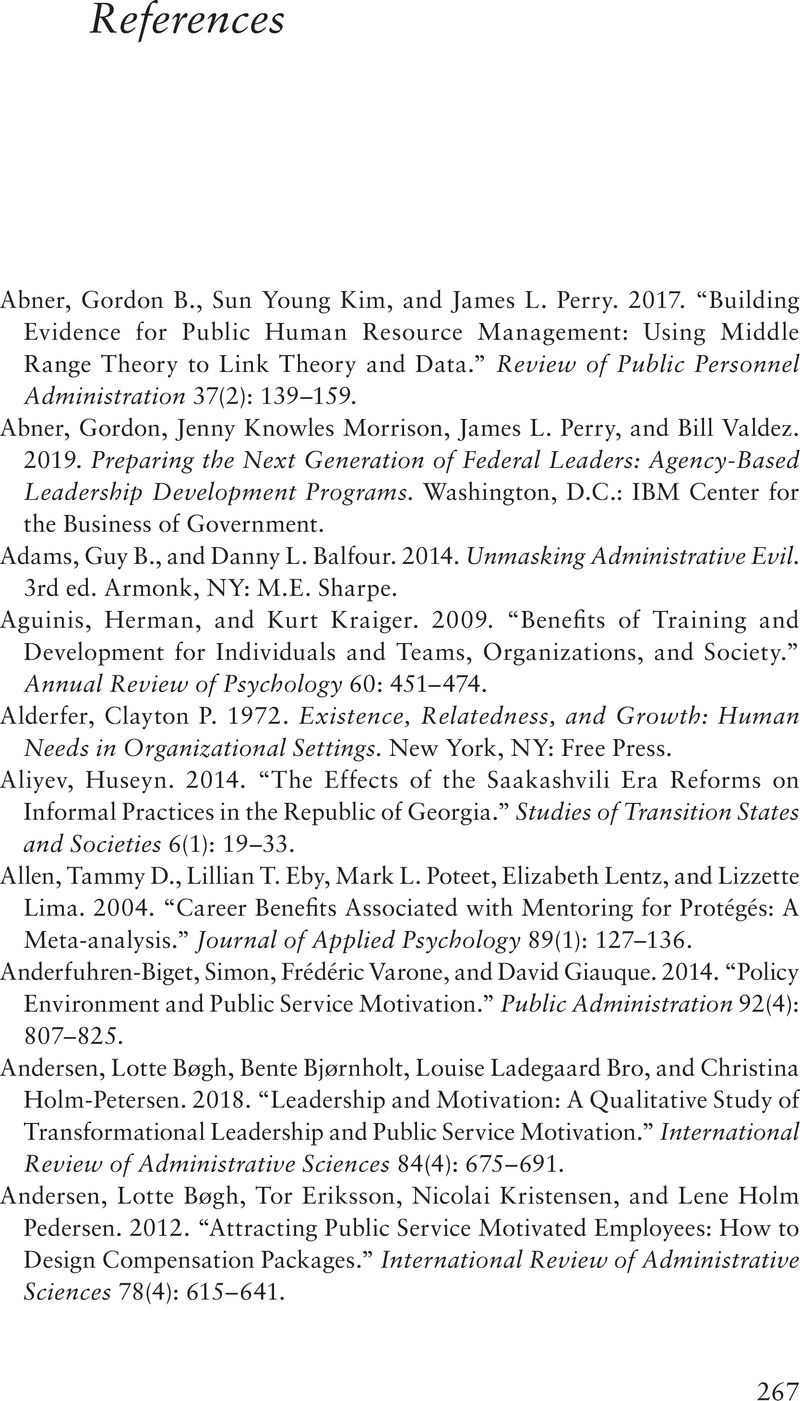Book contents
- Managing Organizations to Sustain Passion for Public Service
- Managing Organizations to Sustain Passion for Public Service
- Copyright page
- Dedication
- Contents
- Figures
- Tables
- Boxes
- Acknowledgments
- Foreword
- 1 New Foundations for Civil Service Systems
- 2 Theoretical and Empirical Foundations for Public Service Motivation
- 3 Selecting for High Public Service Motivation Is a Priority
- 4 Leveraging the Meaningfulness of Public Work
- 5 Creating a Supportive Work Environment
- 6 Aligning Compensation Systems and Public Service Motivation
- 7 Providing Opportunities for Newcomers to Learn Public Service Values
- 8 Leading with Mission, Inspiration, and Communication
- 9 Designing Civil Service to Unleash Public Passion
- References
- Index
- References
References
Published online by Cambridge University Press: 07 December 2020
- Managing Organizations to Sustain Passion for Public Service
- Managing Organizations to Sustain Passion for Public Service
- Copyright page
- Dedication
- Contents
- Figures
- Tables
- Boxes
- Acknowledgments
- Foreword
- 1 New Foundations for Civil Service Systems
- 2 Theoretical and Empirical Foundations for Public Service Motivation
- 3 Selecting for High Public Service Motivation Is a Priority
- 4 Leveraging the Meaningfulness of Public Work
- 5 Creating a Supportive Work Environment
- 6 Aligning Compensation Systems and Public Service Motivation
- 7 Providing Opportunities for Newcomers to Learn Public Service Values
- 8 Leading with Mission, Inspiration, and Communication
- 9 Designing Civil Service to Unleash Public Passion
- References
- Index
- References
Summary

- Type
- Chapter
- Information
- Managing Organizations to Sustain Passion for Public Service , pp. 267 - 305Publisher: Cambridge University PressPrint publication year: 2020



